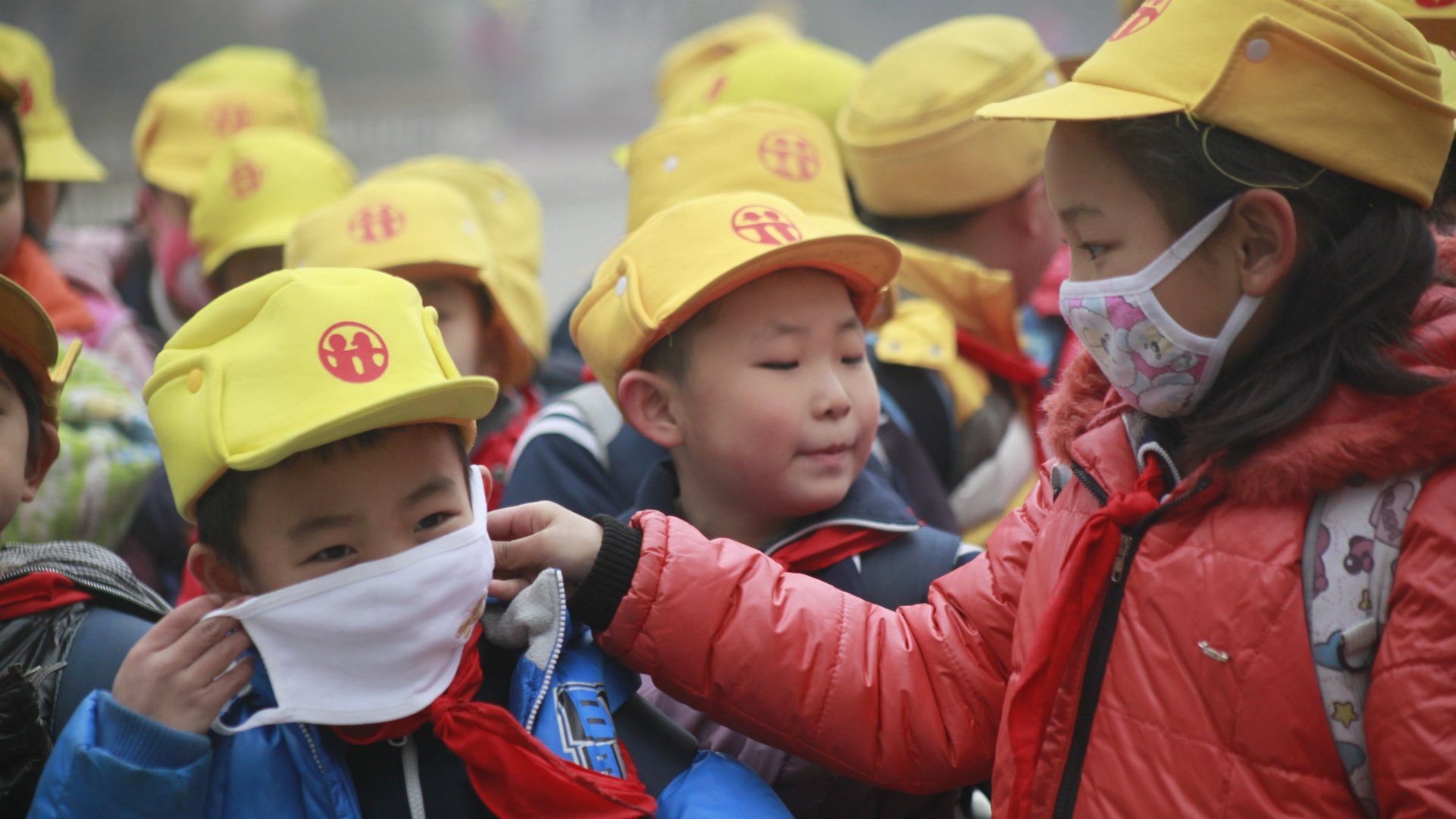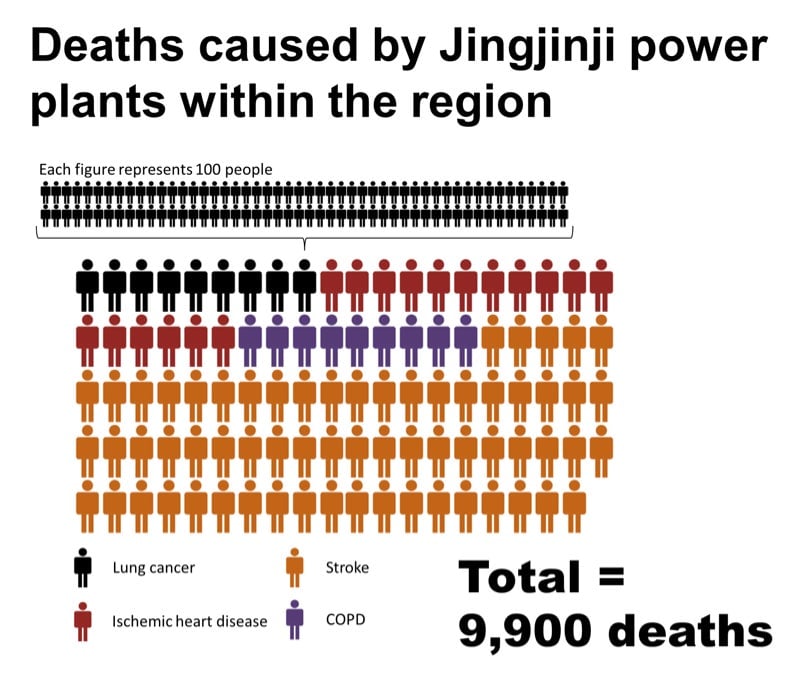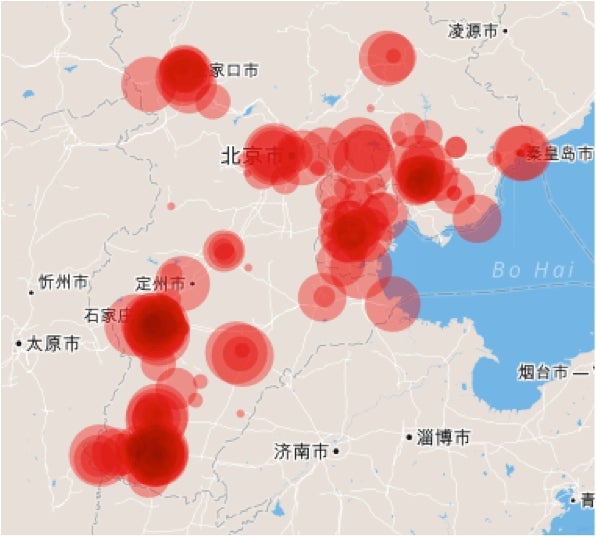Coal-spewing Hebei factories are killing 40 Beijing babies a year
Taking in the spring air in northeastern China feels a lot like entering a smokey bar. In May, of the top 10 major cities with severe air pollution, eight were in the northeast corner: Beijing, Tianjin and six cities from Hebei province (link in Chinese). The concentration of PMI 2.5, the toxic particles that are largely caused by coal smoke, rose 19% compared with the previous month in Beijing and Tianjin.


Taking in the spring air in northeastern China feels a lot like entering a smokey bar. In May, of the top 10 major cities with severe air pollution, eight were in the northeast corner: Beijing, Tianjin and six cities from Hebei province (link in Chinese). The concentration of PMI 2.5, the toxic particles that are largely caused by coal smoke, rose 19% compared with the previous month in Beijing and Tianjin.
Despite public outrage about the air’s inescapable foulness, there isn’t much evidence out there about its health impact.
The data that does exist isn’t pretty. In 2011, coal-fired plants killed 9,900 people in Beijing, Tianjin and Hebei, according to a recent Greenpeace study. Among adults, strokes and heart attacks were the leading causes of death, causing around two-thirds and one-fifth, respectively. Nearly 200 infants—40 in Beijing—died from coal pollution, while 9,330 children developed asthma and more than 1,000 babies born with low birth weights.

Interestingly, the incidence of cancer is relatively minor, despite the fact that PM2.5 contains arsenic, lead, cadmium and a medley of other cancer-causing heavy metals.
But cancer rates in China are climbing, even though research hasn’t yet pegged them to the environment. Someone in China is diagnosed with cancer every six minutes, and lung cancer leads the pack, according to a study by the Chinese Academy of Medical Sciences and the World Health Organization. The report said it couldn’t determine the impact of environmental pollution on cancer rates.
Beijing’s municipal government has been fleet-footed in addressing pollution emissions. Its recent car emissions standards are practically European, and 90% of its coal-fired equipment are installed with filters.
Its closest neighbors are the real problem. The emissions of Hebei’s 152 plants caused 75% of premature deaths in the region, based on the Greenpeace report, including most of those in Beijing.
Hebei burns around three-quarters of the region’s coal, even though only 10% of Hebei’s coal-burning facilities have emissions filters. As a result, the province emits 77-90% of the region’s total coal emissions, says Greenpeace.

Nearly 7,400 Hebei residents have died because of coal emissions, according to Greenpeace. And here’s the rub: Hebei is the sixth-biggest provincial contributor to China’s GDP, and industrial production is responsible for more than half of that. Obviously, China’s central government has its priorities.